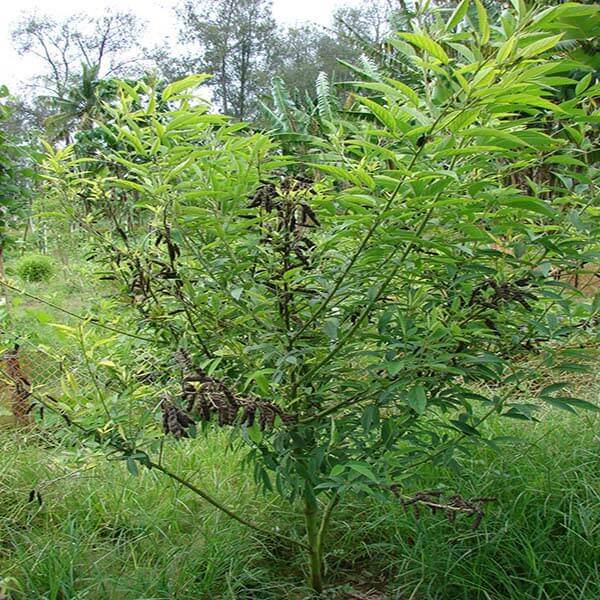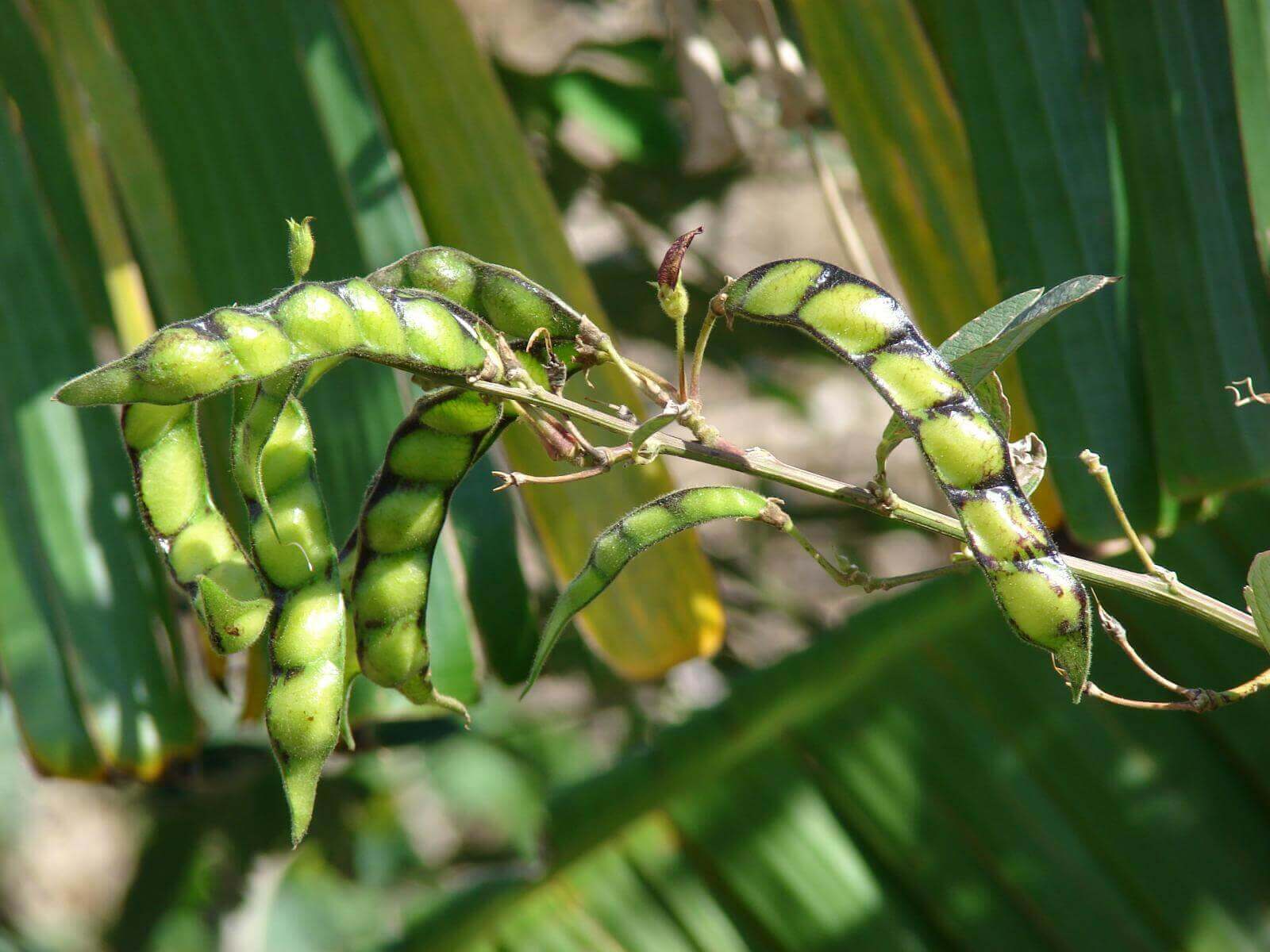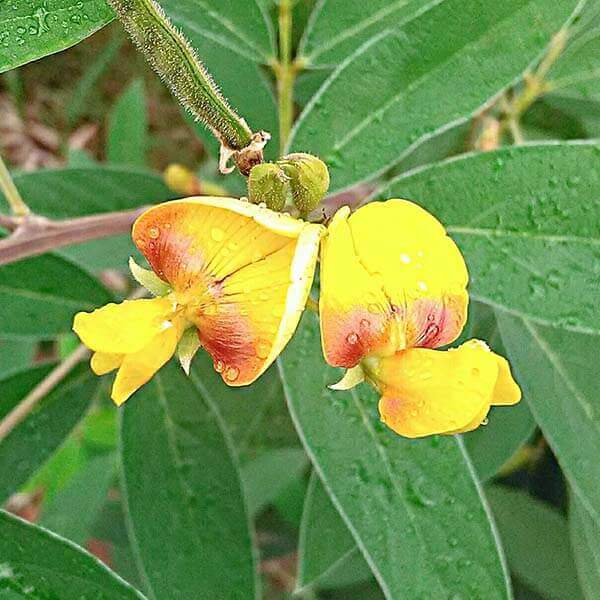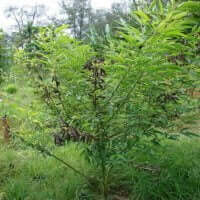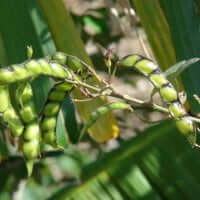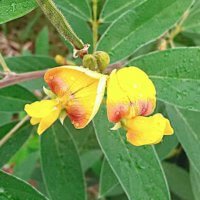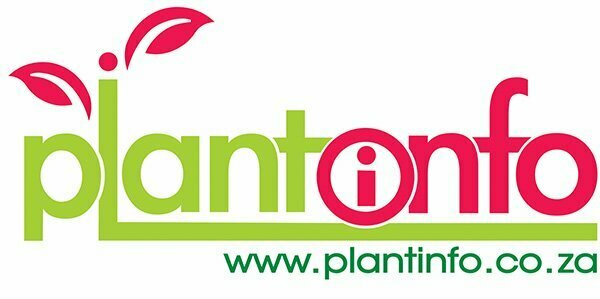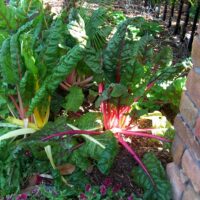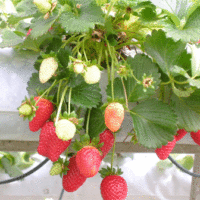| Botanical name | Cajanus cajan |
|---|---|
| Common name(s) | Pigeon pea |
| Plant Care |  Evergreen Evergreen – Never Sheds All of Its Foliage.  Full Sun Full Sun – Prefers 6 or more hours of sun per day.  Frost Sensitive Frost Sensitive – Will Get Damaged and Possibly Killed During Periods of Frost.  Low Watering Low Watering – Requires Little Water.  High Maintenance High Maintenance – Requires Regular Maintenance. |
| Categories | |
| Flowers | The flowers are yellow that cluster at the tips of the bush's upper branches. The flowers are pollinated by bees and other insects. |
| Origin | |
| Foliage | The stems are woody at the base, angular and branching. The leaves are alternate and trifoliate. |
| Fruit | A flat, straight, pubescent pod. It contains 2-9 seeds that are brown, red or black in colour, small and sometimes hard-coated. |
| Soil Conditions | Does best in moist, neutral and basic (alkaline) soils. |
| Uses | Young seeds can be cooked and eaten like peas. Mature seeds are dried and added to soups and stews. The seed can be used instead of soya bean to make tempeh or tofu. Leaves and young shoots can be cooked and used as a vegetable. |
| Interesting planting ideas | Shelters young, delicate plants and lets enough light through for things to grow underneath. A hedge makes a good windbreak and the root nodules release nitrogen into the soil that can be used by other plants. |
| Interesting info | Used in food poisoning, as colic and in constipation. Chinese folk medicine uses pigeon pea leaves to staunch blood, as an analgesic and to kill parasites. In parts of India, the leaf, seeds and young stems are used to cure gingivitis, stomatitis and as a toothbrush. |
Cajanus cajan (Pigeon pea)
- Botanical name: Cajanus cajan
- Common name(s): Pigeon pea
- Categories: Fruits and Vegetables, Shrubs and Perennials
Plant description:
A woody shrub that reaches up to 3m high, grown in the tropics and subtropics for various uses. It is short-lived with deep taproots and can tolerate drought and poor soil conditions. The stems are woody at the base, angular and branching. The leaves are alternate and trifoliate. The flowers are yellow that cluster at the tips of the bush’s upper branches and attract bees and other insects. Seeds, seedpods, leaves, and young shoots are all edible. Pigeon pea is also well known for its medicinal uses.
Family: Fabaceae
Cajanus cajan requirements and features
info on these icons
Moderate Maintenance
Requires moderate maintenance.
Prohibited Use Notice: No Data Scraping Allowed Except for Search Engine Indexing:
The content provided on PlantInfo.co.za is intended for personal, non-commercial use only. Unauthorized extraction, reproduction, or use of the data, including scraping, for any purpose other than search engine indexing is strictly prohibited. Violations of these terms may result in legal action. By accessing and using this website, you agree to comply with these conditions and acknowledge the legal restrictions on the use of our content.

